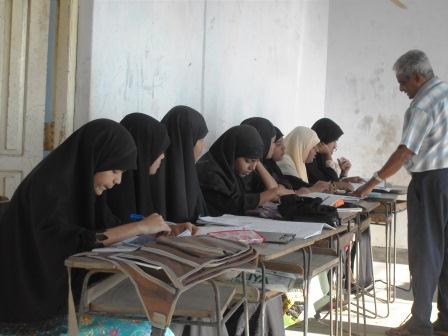Release date: 16 February 2003
Release time: Immediate
MILITARY UNIFORM TYPE OF BELTS WORN BY LTTE CADRES – MANIPPAY INCIDENT
To avoid future clashes between the forces of the Government of Sri Lanka and the Liberation Tigers of Tamil Eelam (LTTE), over LTTE cadres using military uniform type of belts in Government controlled areas the following interim arrangements have been made by Sri Lanka Monitoring Mission (SLMM) and accepted by both parties:
LTTE cadres wearing military uniform type of belts, will voluntarily remove such belts before entering into Government controlled areas and will not wear them while staying in Government controlled areas. LTTE cadres that do not follow this procedure will be denied access to Government controlled areas. If LTTE cadres do not follow this procedure, the forces of the Government of Sri Lanka will immediately call for SLMM assistance. Such provision is also given to the LTTE. SLMM monitors will, on the spot, rule the situation and advise both parties to comply strictly with the above-mentioned procedure. It should be made very clear that these arrangements apply for military uniform type of belts only. Consequently, LTTE cadres may wear any type of civilian belts when entering and staying in Government controlled territory.
A clash over LTTE cadres wearing military uniform type of belts, took place between Government forces and LTTE cadres at Manippay in Jaffna peninsula on Wednesday 12th of February. SLMM ruled on the 16th of January that such belts were a part of the LTTE female cadre uniform. Therefore it can be considered a violation when LTTE cadres wear them in Government controlled areas. The decision of the Government forces to forcefully remove the military uniform type of belts from the LTTE cadres on the scene clearly created tensions which lead to a demonstration led by LTTE. An anti-riot squad was deployed by the Government forces to disperse the crowd. SLMM Monitors on the scene witnessed members of this riot squad attacking and beating innocent people that had nothing to do with this demonstration. These actions of the anti-riot squad were hostile acts against the population and as such, constitute a clear violation of article 2.1 of the Ceasefire Agreement which states; “The Parties shall in accordance with international law abstain from hostile acts against the civilian population, including such acts as torture, intimidation, abduction, extortion and harassment.”
SLMM urges all Government forces and all LTTE cadres to show restraint and discipline and to avoid confrontations with each other at all times. It is the evaluation of SLMM that there is now an urgent need for a modern, well trained police force in order to gradually normalize the situation in the Government controlled areas in the North and East of Sri Lanka. Using military forces to maintain law and order can be justified during times of war, but is highly likely to lead to unnecessary violence and increased tensions during times of peace.
In spite of numerous violent incidents during the Ceasefire period, there is no doubt that the Government of Sri Lanka and the LTTE leadership have shown a strong dedication for a negotiated settlement to the long conflict between them. SLMM is of the opinion that every time the parties overcome one more of those difficulties, they strengthen the ceasefire and gain more confidence in their own ability to move forward to a permanent peace.
Released By
SLMM HQ
Colombo
Ref:SLMM HQ/16th Feb.2003/MED/6023
.jpg)
The Road to Reconciliation, 2010
- Investment and Education for Development
(January 21, 2011)
- Stability and Confidence for Revitalization - entrepreneurship and education amongst the resettled
(January 21, 2011)
- Civil Military Liaison - The key to social progress
(January 21, 2011)
- Overcoming constrictions and tyranny - The oppression of the LTTE in Mullaitivu
(January 21, 2011)
- Promoting Contact - English programmes for all communities in the East
(January 21, 2011)
- Making Connections - The revival of Trincomalee
(January 21, 2011)
- Individual Innovations and Initiative
(January 21, 2011)
- Independence Day Celebrations at the Rehabilitation Centres
(January 21, 2011)
- Returns for the Old and the Recently Displaced
(January 21, 2011)
- Promoting Prosperity and Reconciliation in Amparai
(January 21, 2011)
View all articles in this section
Disclaimer
The material presented on this website is released under the Creative Commons Attribution-ShareAlike 3.0 Unported license , which allows free use, distribution, and creation of derivatives, so long as the license is unchanged and clearly noted, and the original author is attributed. Some of the works on this server may contain live references (or links) to information created and maintained by other organizations, the accuracy for which we are not responsible.The views expressed in the material on this website are personal to the respective authors and do not necessarily reflect any official view.

Processing Request
Please Wait...















.jpg)